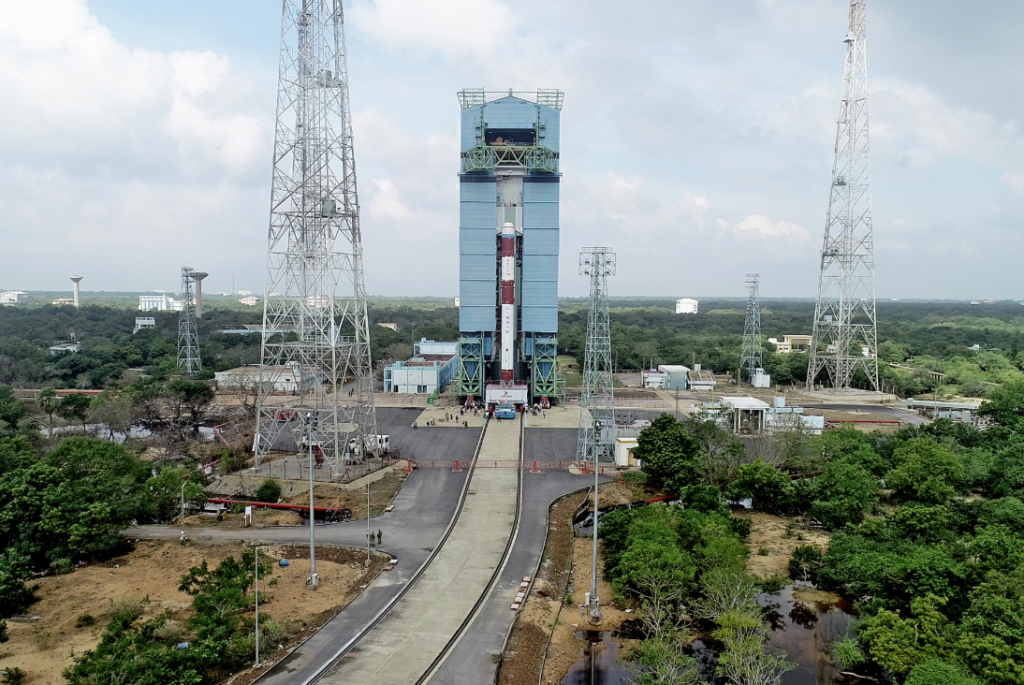SpaDeX Space Docking Technology is a cost-effective technology showcased by the Indian Space Research Organization (ISRO). It shows space docking capability using two small spacecraft(SDX01 is the chaser, and SDX02 is the target). This mission, which includes a lunch mission, sample return, and building the Bharatiya antacids station(BAS), is essential for ISRO’s future space race.

PS4 orbital experiment module, also known as PSLV original experiment platform (POEM), refers to using the spent fourth stage of the polar synchronous launch vehicle (PSLV).
PSLV-CA”core alone” C60, CA model does not include the six-strap booster. It capability has 1,100kg(2,400Ib) to 622 km(386mi).
credit: youtube.com/ndtv
What has ISRO achieved so far?
- Inspired by global ISRO, it made it a reusable launch vehicle.
- ISRO did early-stage reusable vehicle concepts, like scaled-down prototypes.
- ISRO successfully conducted a test flight to validate re-enter, aerodynamic, and landing.
Upcoming launches?
- Reusable Launch Vehicle(RLV) showcase is expected to simulate actual launch and recovery conditions.
- Objective: achieving vertical takeoff, precision landing, and reusability for subsequent missions.
- ISRO’s upcoming launch may involve Indian startups and global clients to showcase SpaDeX’s reliability and capability.
what is space docking technology?
Space Docking Technology is a set of techniques that are used to connect two spacecraft in orbit. it is crucial for various space operations like resupplying space stations, assembling modular spacecraft, and enabling crew transfers.
Docking requires precise highly advancing engineering and careful coordination because complexities of orbital mechanics and also needs secure physical functional connection.
brief about the application of docking technology
- Space station: re-supplying crew rotations of the International Space Station (ISS) or future orbital habitats.
- Inter-planetary mission: assembling large spacecraft in orbit for Mars & Moon exploration and it is quite importent we have to colonize space first to make human inter-planetary species.
- Orbital tourism: it is fascinating for me also we can travel to space. Vergin Galatic & Bule Origin already doing that.
what ISRO want to achieve by spadex?
The SpaDeX mission by the Indian Space Research Organization (ISRO) is to design space docking and reduce space debris. look how aims to solve this:
- Satellite docking technology
- Spadex showcases the autonomous docking of two satellites in space.
- Refueling satellites to extend their lifecycle.
- Repairing and upgrading satellites in orbit.
- Reducing debris
- This mission will test methods for handling space debris, a growing concern for satellite operations.
NOTE: ** Look if you want to know more about space debris, please head into esa.int
how (BSA) connect with spadex?
By doing this, Spadex Mission Isro Amis will develop and demonstrate advanced space docking technology, including space station and interplanetary missions. Now talking about Bharatiya Space Agency (BSA) India’s capability in space exploration.
overview of BSA
- Space capability: The BSA will strengthen India’s position in global space, especially by creating a space station.
- Space station development: The BSA is expected to contribute significantly to the development of the BAS, which is planned as India’s modular space station. This station will facilitate long-duration human missions and various scientific research activities in microgravity.
what is POEM-4?
The Polar Satellite Launch Vehicle (PSLV) Orbital Experiment Module (POEM) is an innovative platform developed by the Indian Space Research Organisation (ISRO) to repurpose the spent fourth stage of the PSLV rocket for conducting in-orbit experiments.
POEM-4, the fourth mission in this series, is scheduled for launch on December 30, 2024, as part of the PSLV-C60/SpaDeX mission. This mission represents a significant advancement over its predecessors, hosting 24 experimental payloads—three times the capacity of POEM-3, which accommodated eight payloads.
POEM-4 will carry 24 payloads for this mission if, you want to know briefly about everything please visit isro.gov.in
In conclusion, thank you again. We’d love to hear your thoughts on this article, including what you like and what we can improve. Please feel free to email us.
